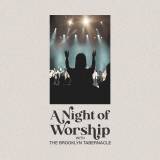Effective Backing Vocals
I don’t know how many of
us have witnessed multiple lead vocalists attempting to share the same vocal
stage – during the same song. While there may be some true “harmony” present,
there can be a perceived “limelight-hog” air about the event that can leave the
participants feeling like they’ve gotten a pedicure from a cheese grater
(slightly amusing, but mostly painful).
While assembling a team
that includes several powerhouse singers can seem like a worship leader’s dream
come true, there is an inherent danger in opening the flood gates. Supportive
singers are intended to be just that… “supportive.” The goal is not about impressing
the congregation with our skills, it’s about assisting in drawing the
congregation into a worship-filled experience. While it is within our ability
as supportive vocalists to grab the oars and plow through “Oceans” with
powerful and amazing harmonies, we need to be mindful and constantly aware of
the mood, phrasing, and tone presented through the worship leader.
Supportive singers are
intended to be just that… “supportive.”
Song Phrasing
Many worship songs
contain builds, climaxes, breakdowns, and recaps. Adjusting your abilities to
support the phrasing of the song is a critical tool we need to keep foremost in
our toolbox. Generally, appropriate phrasing consists of the worship leader
fielding the first verse on their own. Then, as the stew is cooking, we season
the next verse, bridge, or phrase with a single harmony or octave unison (as
the register and complexity of the melody permits). We then build the chorus
with a deeper oblique (or single tone) harmony to fill the chord. As we move to
the next phrase or verse, we need not “reset” the supportive line, but may
choose, instead, to back the support down to the single harmony.
Melodic Latching
When we support the melody
with a harmony that matches the timing of the melody, we “latch” onto that
melody. As supportive singers, it is important that we not only follow the
melodic rhythm as closely as possible, but we also can adjust our diction to
adopt warmer pronunciations. The more we concentrate on the open vowels in our
diction, the less absolute we must be in articulating every consonant.
Not only does this create a full and rich sound on open vowels, it minimizes
the amount of hard consonants heard by the audience – which run the risk of not
being at the same time! So instead of hearing the word “peace,” the
audience hears “peace-ce-ce-ce-ce-ce-,” which is something we absolutely do not
want to have happen.
Following Worship Leader Cues
The worship leader will
sometimes adjust their vocal delivery by backing away from the mic when the
Spirit is engaging the congregation. This most oftentimes occurs in a Chorus
recap, but can also present itself within other moving phrases. Now, imagine we
– as supportive vocalists – aren’t paying attention to the movement of the
Spirit as closely as we should. The result can be an awkward and unbalanced
harmony presenting through the PA, with little or no melody reinforcement. The
key to an effective and unified vocal presence resides in our adaptation to the
worship leader’s cues. When we see them back away from the mic to let the
Spirit’s movement in the congregation take control for a short while, we – as
supportive vocalists – need to mimic the cue and back away as well. Backing
away from the mic is also an extremely effective tool we as singers can use to
project in a more “ambient vocal” manner.
Effective Backing Vocals
 Reviewed by Admin
on
12:30:00 PM
Rating:
Reviewed by Admin
on
12:30:00 PM
Rating:
 Reviewed by Admin
on
12:30:00 PM
Rating:
Reviewed by Admin
on
12:30:00 PM
Rating:

















Post a Comment